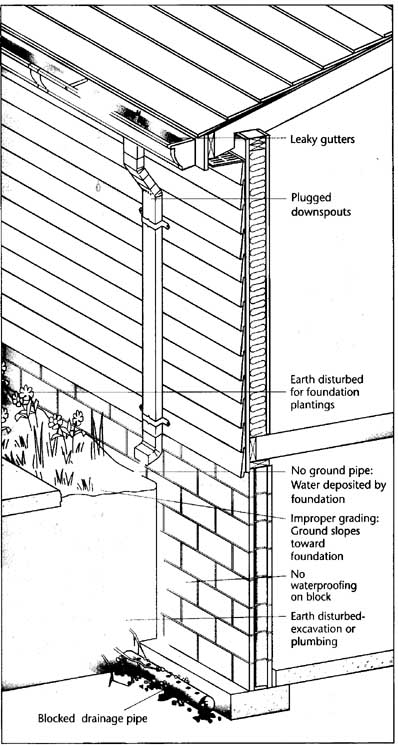In houses with basements, the single most commonly reported problem is a wet basement. Wet basements result from two possible sources of water: ground water (the rain and snow that falls on a property) or a high water table. However, according to estimates from the National Association of Home Builders, 95 percent of basement water problems are simply due to the entry into the basement of ground water from rain and snow. Only 5 percent of wet basements are caused by a high water level in the soil.

Poor water management due to common mistakes shown, are primary
cause of wet basements.
Because there is nothing the homeowner can do to change the water table, a complex and expensive system of trenches, pipes, and sump pumps is the only cure for removing water that enters from a high water table. But, as we will see, the odds are great that the homeowner can cure the wet basement problem by attacking the problem of ground water entry. This cure may be accomplished by adding or improving a rain gutter system to deliver roof water away from the house, by correcting the slope or grade of the land adjacent to the house so that water will be diverted and will flow quickly away from the basement, or by patching basement cracks and applying one or more coats of a waterproofing material to the interior side of the basement’s concrete walls. To ensure a permanent cure for wet basement problems, any solution should include all three of the above steps: adding or improving roof gutters, correcting any grade problems, and waterproofing the basement walls.